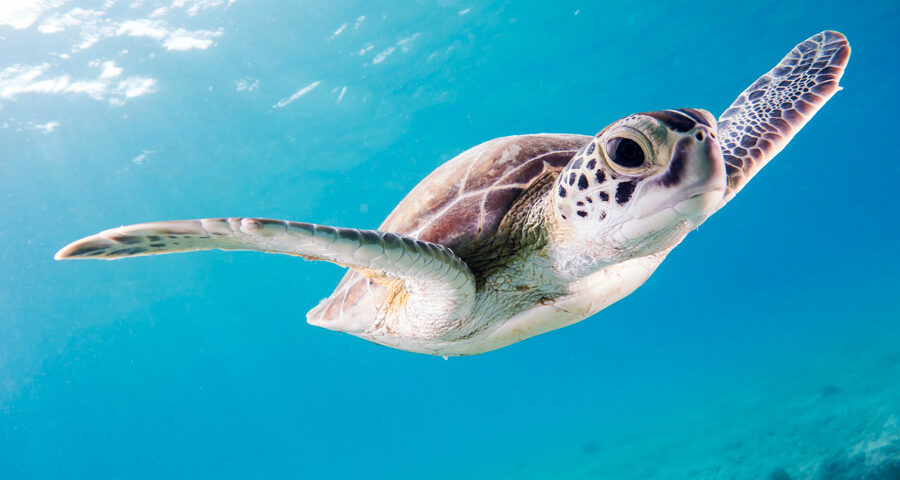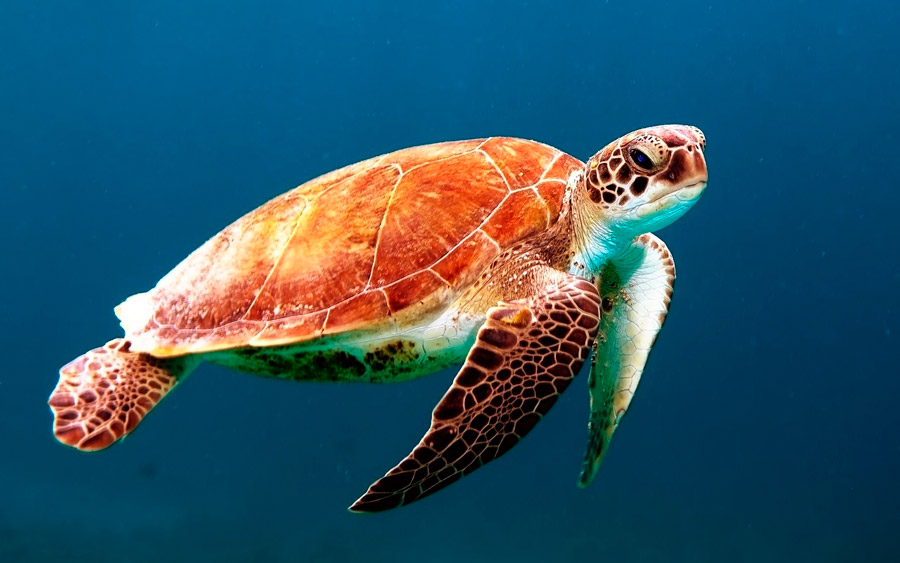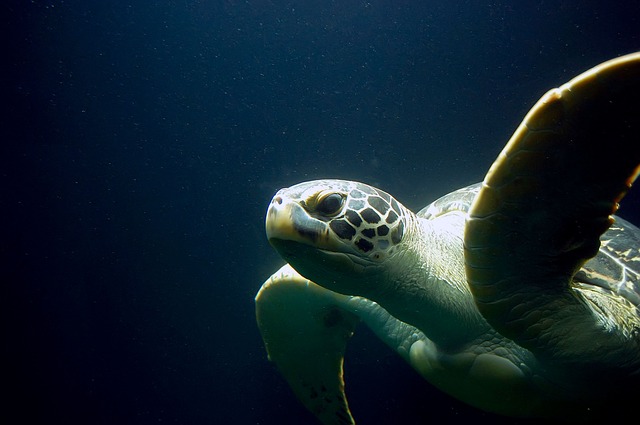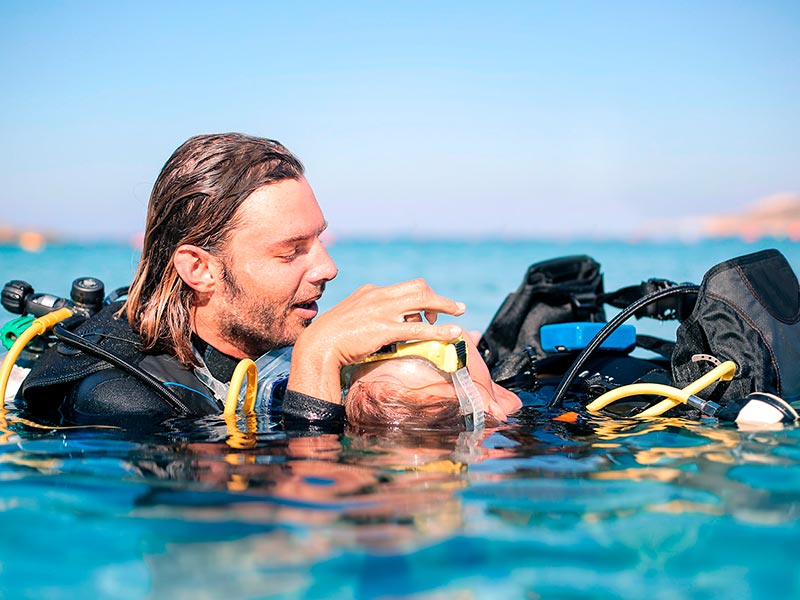If you have ever been diving in the Caribbean, you probably already suspect that it is part of the green turtle habitat. In this article, we will review some interesting facts about the places where this animal lives.
We call it Greenie, or her, because Greenie is a female turtle. Yes, we know. We are not good at naming. But with this name, we baptize our friend. It is her story.
We visit Tortugas reef from our base in Playa del Carmen at least, 5 times a week. On one of our first dives, almost 25 years ago, we found Greenie in distress. A net trapped our friend, and it was hurting her leg. We helped Greenie to get freedom. However, our green turtle still shows a scar on its leg that helps us recognize it from the rest. If you ever dive Tortugas reef and are lucky enough that Greenie has returned there to spawn, maybe, just maybe, you will see her, and she comes over to say hello.







